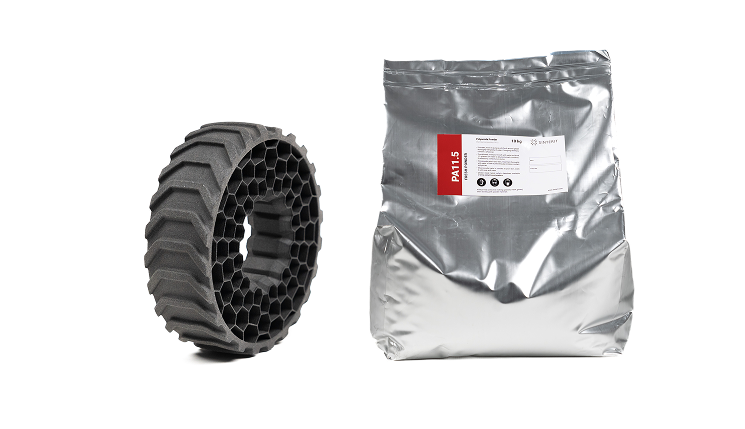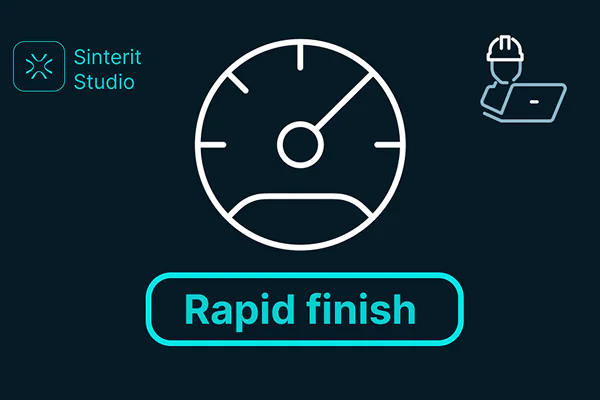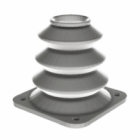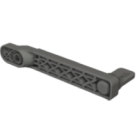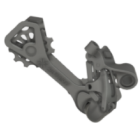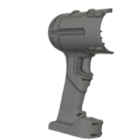Pre-configured platforms for SLS 3D printing in research
As a manufacturer of compact SLS 3D printing systems, Sinterit frequently works with research institutions and R&D teams exploring the boundaries of additive manufacturing. One of the most common questions we receive is: “How far can we go with a closed SLS system in scientific research?”
Closed SLS systems – designed with fixed parameters and proprietary material ecosystems – prioritize reliability, ease of use, and consistent output. While these traits are ideal for production and prototyping, they may appear restrictive to those pursuing scientific inquiry or process innovation. Still, despite these limitations, there is a significant amount of research in 3D printing that can be carried out within these systems, provided the focus is in line with the system’s capabilities.
This article looks at what you can (and can’t) do with closed SLS systems in research, and how they can still be surprisingly useful in pushing 3D printing forward.
Material property testing with closed SLS systems
Even with a closed SLS system, there’s plenty of meaningful research in 3D printing you can do when it comes to understanding material behavior. Sure, you’re limited to the materials offered by the manufacturer, but those materials still need to be tested and validated for specific applications. You can evaluate mechanical properties like tensile strength, elasticity, and fatigue life, or look into how a material performs under thermal stress or chemical exposure. It’s especially useful when you’re planning to use the material in demanding environments and need real data to support design decisions.
Real-life example: A research group at a European technical university worked with a SLS printer to analyze the aging behavior of nylon parts exposed to prolonged UV and humidity. They were studying how printed components would perform over time in outdoor sensor housings for smart agriculture systems.
Limited parameter control: what can still be adjusted
Closed SLS systems don’t give you access to the full range of print parameters, but that doesn’t mean you’re locked out of experimentation entirely. Many systems still allow for limited adjustments like laser power, scan speed, or layer thickness. These “guardrails” help maintain safety and print reliability, but also give researchers enough flexibility to explore the effects of fine-tuning. Small shifts in parameters can impact part density, warping, surface texture, or energy consumption – valuable insights for anyone trying to optimize part performance or print efficiency.
Real-life example: A design engineering team used the adjustable layer thickness option in a closed SLS printer to experiment with part speed and resolution. They were developing drone housing components and discovered that a slightly thicker layer significantly reduced print time without compromising the fit of snap-fit features.
Validating new designs and applications
One of the biggest strengths of closed SLS 3D printing systems for research is how reliably they can print complex, support-free geometries. This makes them ideal for research focused on design innovation and application testing. You can evaluate new part geometries, internal lattice structures, mechanical joints, or even moving assemblies – all within a stable and repeatable print environment. It’s particularly helpful when you want to validate function, ergonomics, or part behavior before investing in mass production.
Real-life example: An automotive innovation lab used a SLS system to develop and test custom dashboard mounts for electric vehicles. They ran multiple iterations of the part to find the optimal balance between strength, flexibility, and aesthetic integration – all without modifying the printer or materials.
Exploring post-processing techniques in research
Research doesn’t stop when the print is finished. Post-processing is a huge area of opportunity, especially when working with consistent parts from a closed system. You can dive into experiments with vapor smoothing, dyeing, surface texturing, or even coating applications like antimicrobial films or UV protection. Since the input parts are standardized, you can isolate the effects of different finishing methods more effectively and gather reliable comparative data.
Real-life example: A wearable tech startup used a SLS printer to produce enclosures for smart fitness devices. They tested multiple vapor smoothing recipes to find a balance between cosmetic finish and device sealing, eventually creating a custom workflow that met both performance and style requirements.
Limitations of closed SLS 3D printing in scientific use
While closed SLS systems offer reliability and ease of use, they do have clear limitations when it comes to more experimental or material-driven research. Most notably, you’re restricted to the manufacturer’s approved materials, which means you can’t test custom powder blends or third-party options – something that’s often essential in advanced materials research. Additionally, access to deeper machine parameters like powder bed temperature curves, scan strategies, or custom firmware is usually locked down. This makes it difficult (if not impossible) to explore process innovation, integrate external sensors, or experiment with machine learning algorithms for process control. For researchers aiming to push the boundaries of additive manufacturing technology itself, an open or semi-open system is typically a better fit.
Summary: when closed SLS systems make sense for research
Closed SLS systems might not give you all the knobs and switches to tinker with, but that doesn’t mean they can’t be useful for research. They’re great for testing material behavior, refining part designs, and experimenting with post-processing – especially when you want consistent, reliable results. Sure, there are limits when it comes to using your own powders or digging deep into machine settings, so if your research is all about pushing technical boundaries, an open system might be a better fit. But for many projects, closed SLS printers still offer a solid, practical platform to explore and discover what works.
FAQ: SLS 3D printing in research with closed systems
Yes, absolutely – though it depends on the kind of research you’re doing. Closed systems are great for testing material properties, optimizing print settings (within limits), experimenting with part design, and trying out different post-processing methods.
If you’re looking to experiment with custom powders, create your own sintering profiles, or tweak the machine’s firmware, a closed system probably won’t cut it. Most of those deeper settings are locked down.
It’s a solid choice when you want consistent, repeatable results, like for application testing, performance benchmarking, or refining part geometry. If your focus is practical outcomes rather than deep technical experimentation, it can be a great fit.
In a closed SLS system, modifying print parameters is generally limited or restricted by the manufacturer to ensure consistent performance and protect proprietary settings. However, some systems may offer limited access to select parameters or provide advanced user modes, depending on the machine and software used.
With a closed SLS system, research can focus on part design optimization, mechanical property evaluation, and process repeatability using predefined materials and parameters. It is well-suited for prototyping, functional testing, and application-specific studies where system reliability and consistency are priorities. However, it may limit material development or deep process exploration due to restricted parameter access.
Yes, a closed SLS printer is well-suited for university labs that prioritize ease of use, safety, and consistent results across users. It’s an excellent choice for teaching, prototyping, and application-focused research without the need for extensive process adjustments.
The main limitations for advanced research in closed SLS systems are restricted access to process parameters and limited material flexibility. These constraints hinder experimentation with new powders, custom settings, or novel process strategies essential for in-depth scientific exploration.


